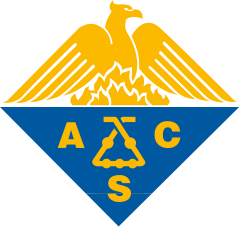Open Access


International Journal of Energy Research, volume 45, issue 10, pages 14547-14560
Synthesis and characterization of new proton‐exchange membranes based on poly‐1‐vinyl‐1,2,4‐triazole doped with phenol‐2,4‐disulfonic acid
2
Angarsk State Technical University Angarsk Russia
|
3
A.E. Favorsky Irkutsk Institute of Chemistry, Siberian Branch, Russian Academy of Sciences Irkutsk Russia
|
Publication type: Journal Article
Publication date: 2021-04-14
scimago Q1
SJR: 0.826
CiteScore: 9.8
Impact factor: 4.3
ISSN: 0363907X, 1099114X
DOI:
10.1002/er.6686
Energy Engineering and Power Technology
Fuel Technology
Nuclear Energy and Engineering
Renewable Energy, Sustainability and the Environment
Abstract
Poly‐1‐vinyl‐1,2,4‐triazole (PVT) was synthesized in isolated yield by free radical polymerization of 1‐vinyl‐1,2,4‐triazole. The number average molecular weight and weight average molecular weight of the synthesized PVT, determined by gel permeation chromatography, was 88 567 and 153 309 Da, respectively. PVT had a unimodal molecular weight distribution with a polydispersity coefficient of 1.7. Mixing PVT with phenol‐2,4‐disulfonic acid (PDSA) in the presence of a polyvinyl alcohol cross‐linked with oxalic acid produces proton exchange membranes having different PVT:PDSA ratios. The composition and structure of the membranes were established by elemental analysis, energy‐dispersive X‐ray spectroscopy (EDS), scanning electron microscope (SEM), Fourier‐transform infrared spectroscopy (FT‐IR), and nuclear magnetic resonance spectroscopy (NMR). FT‐IR and 15N NMR studies have shown that the interaction of PVT with PDSA was accompanied by the formation of acid‐base complexes due to proton transfer from PDSA to the triazole rings of PVT. Formation of acid‐base complexes PVT‐PDSA additionally stabilizes membranes and increases their thermal stability. The SEM study showed that the membrane surface was homogeneous. The properties of membranes, such as thermal and oxidative stability, ion‐exchange capacity, proton conductivity, water uptake, and their mechanical properties, have been studied. The commercial membrane Nafion 212 was used as a comparison. The proton conductivity of membranes increases with an increase in the content of PDSA in their composition and for membranes 1‐3 was 59.80, 7.30, 6.23 mS/cm, respectively. The activation energies for proton transfer across the membranes were 19.5, 21.6, and 38.2 kJ/mol for the membranes 1‐3, respectively. Water uptake, ion‐exchange capacity, and proton conductivity depend on the content of PDSA in the membrane. The membranes obtained were tested in a test cell of an ElectroChem hydrogen fuel cell (USA) at a temperature of 25°C with the supply of humidified hydrogen and air.
Found
Are you a researcher?
Create a profile to get free access to personal recommendations for colleagues and new articles.






